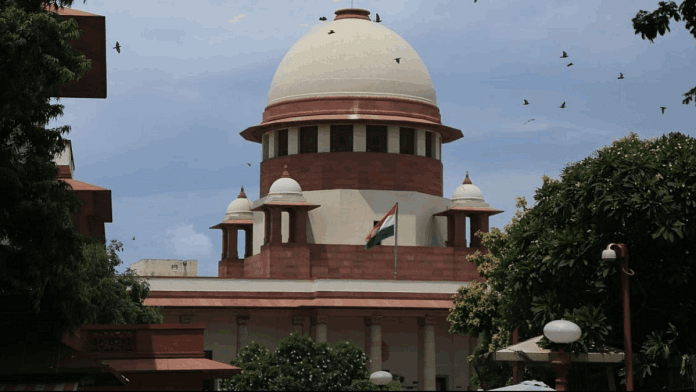New Delhi: Chief Justice of India D.Y. Chandrachud announced Thursday that the Supreme Court would now be covered by the National Judicial Data Grid (NJDG) – which tracks pending and disposed-of cases in various courts across the country.
“It is a historic day,” the Chief Justice said as he made the announcement, adding the “unique platform” was developed by the National Informatics Centre (NIC) in collaboration with the top court’s software team.
An apex court statement said: “Now on a click of a button, one may access case related information, statistics such as institution, pendency and disposal of cases, case-types, year-wise break-up of the Supreme Court of India.” This, the Chief Justice added, would bring in “transparency and accountability”.
The NJDG is a consolidated Indian judicial data warehouse which gives real-time updates. It stores entire case details, including orders and judgements of all courts.
Data about the district and taluka courts was the first to be uploaded on the grid that opened for public access in September, 2015. Two years later, data related to the high courts was also added. Up until now, the NJDG would show data only for high courts and district courts across the country.
The grid shows category-wise, year-wise, and state-wise pendency and disposal of cases across institutions. It also reveals reasons for the delay in cases. The statistics are updated every day by respective courts.
Additionally, the grid allows a visitor to the website to segregate data into age-wise categories, enabling them to view cases that have been pending for, say, five or ten years.
Making the announcement Thursday, the Chief Justice said 583 cases were currently pending before three-judge benches, adding he would soon set up benches to hear them. The data showed that 288 cases were pending before five-judge benches and another 21 cases before seven-judge benches. A total of 135 cases were pending before nine-judge benches.
Data further showed that over 37,000 cases were instituted in the Supreme Court this year, and a total of 36,164 cases have been disposed of so far. It showed over 5,400 cases were registered last month, while more than 5,000 were disposed of. The grid also showed there were 142 cases pending in the Supreme Court for 20 to 30 years, and another 17 for over 30 years.



